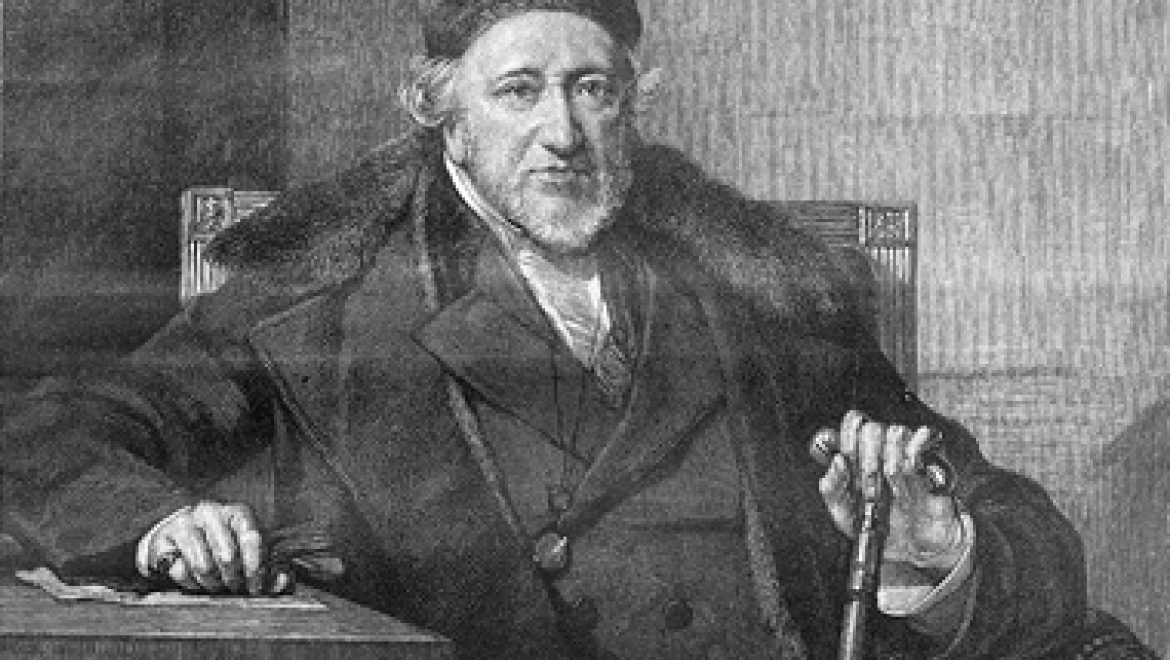
This article provides both basic biographical information and lesser known facts and anecdotes about Sir Moses Montefiore, the British Jewish philanthropist that founded the first Jerusalem neighborhoods outside of the walls of the Old City. It was posted on Streets of Israel, a blog that tells the stories of the personalities behind Israel’s street signs.
12 Things You Need to Know About Moses Haim Montefiore
- The man who would become Sir Moses Montefiore, First Baronet, was born in 1784 in Livorno to an Italian Jewish family while his parents were on a journey in Italy. As a boy he lived in London and grew to be a physically imposing six-foot-three. He became a financier, one of the twelve “Jew brokers” licensed by the City of London.
- Through marriage, he gained Nathan Rothschild as a brother-in-law; his brother married a sister of Nathan Rothschild. The two families had close financial ties, and he became business partners with Nathan. While his main business was at the London Stock Exchange, he was active as well in business ventures including gas for street lighting, life insurance and banking.
- At the age of 40, he retired from business and thereafter spent much of his time on philanthropic projects. In 1838 he was knighted by Queen Victoria and in 1848 became a baronet in recognition of his humanitarian activism on behalf of the Jewish people. He donated large sums to promote industry, education and health, especially as regarded the Old Yishuv in Jerusalem. They were dependent on charity, living in deplorable conditions, and his aim was to make them self-supporting.
- He first visited Palestine in 1827, after which he became an observant Jew, going so far as to travel with his own shochet (ritual slaughterer). He attended synagogue for the Torah readings on Mondays, Thursdays and Saturdays, and in 1831 purchased adjoining parcels of land in Ramsgate, on the southern coast of England, where he had a private synagogue built, in addition to his lodgings. He was to travel to Eretz Yisrael at total of seven times – again in 1827, ’38, ’55, ’57, ’66, and the last time in ’75, at the age of 91.
- He became president of the Board of Deputies of British Jews in 1835 and served in this capacity until 1874, a period of 39 years. Notably, in 1841-2, he corresponded with Charles Henry Churchill, the British Consul in Damascus, concerning the resettlement of Jews; their letters are seen as pivotal in the infancy and development of early Zionism.
- In 1840, he prevailed upon the Sultan of Turkey to liberate ten Syrian Jews who had been jailed in Damascus for a blood libel. In Rome, in 1858, he tried to free a Jewish youth who had been baptized by his Catholic nurse and kidnapped by church functionaries. In 1846 he traveled to Russia, succeeding in getting the Tsar to rescind the decree of expulsion against Jews from the border areas of Russian Poland. In Morocco 1864, in Romania 1867, and again in Russia 1872: he became widely known as the champion of East European and other diaspora Jews, effectively protesting their persecution.
- As executor of the will of Judah Touro, who died in 1854, Montefiore used the estate to fund projects of Jewish residential settlement in Eretz Yisrael. In 1855, he purchased an orchard on the outskirts of Jaffa to offer agricultural training to Jews.
- In 1860, he funded the first Jewish residential settlement and almshouse outside the walled city in Jerusalem – today known as Mishkenot Sha’ananim. It was the first settlement of the New Yishuv. Other settlements were built south of the Jaffa Road: Ohel Moshe for Sephardim and Mazkeret Moshe for Ashkenazim. Perhaps his best-known project today is the Montefiore Windmill, built in Yemin Moshe to provide cheap flour to the poor. It operated for about nineteen years and is today a beloved landmark. He helped finance several Bilu agricultural colonies and a textile factory, and it was he who provided a new printing press for Yisrael Bak [see my blog post of 4/30/14].
- He commissioned censuses of the Jewish community in Palestine in 1839, ’49, ’55, ’66 and ’75, thus furnishing a trove of information that is still of value today. In 1874, on the occasion of his ninetieth birthday, he established a fund that became instrumental in facilitating Hovevei Zion settlements in Palestine.
- Jewish philanthropy was his major, but not his only, interest. He campaigned for the abolition of slavery and in 1835, with the Rothschilds, raised a government loan that made possible the abolition of slavery in the British Empire by enabling the government to compensate plantation owners.
- He was known for his sharp wit. A story told about him, perhaps apocryphal, since the same story is told of Israel Zangwill, concerns a well-known anti-Semite who was seated next to him at a dinner party. The man said, “I’ve just returned from Japan, where they have neither pigs nor Jews.” Montefiore promptly replied, “Then you and I should visit there, so they will have an example of each!”
- His hundredth birthday was celebrated as a national event in Britain and by Jews worldwide. He died in 1885 and was buried alongside his wife at his synagogue in a mausoleum modeled on Rachel’s Tomb (outside Bethlehem). Among the many institutions named for him are the Montefiore Medical Center in the Bronx, a branch of the University of Pittsburgh Medical Center, the Moses Montefiore Academy in Chicago, and synagogues in Illinois, Maryland and Texas.

